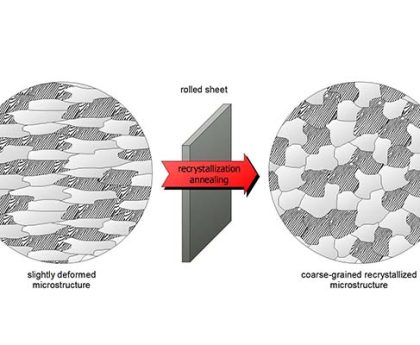Tin foil and aluminum foil are both commonly used in the kitchen for a variety of purposes, including cooking, storing, and preserving food. While they may seem interchangeable at first glance, there are actually quite a few differences between the two types of foil. In this post, we’ll take a closer look at the history, properties, and environmental impact of tin foil and aluminum foil, and help you decide which one is the best choice for your needs.
History of Tin Foil and Aluminum Foil
Tin foil has been around for centuries and was originally used as a decorative material. It was also used to make packages for food and other items. However, the production of tin foil was a labor-intensive process and the material was relatively expensive, so it was not widely used.
Aluminum foil, on the other hand, was only discovered in the late 1800s. It was initially produced for use in the electrical industry, but it wasn’t long before it was also being used in the kitchen. In the early 20th century, aluminum foil started to replace tin foil in many applications due to its lower cost and ease of production.
Comparison of Tin Foil and Aluminum Foil
So what are the main differences between tin foil and aluminum foil? Let’s start by looking at the physical properties of the two materials.
Physical Properties
One of the most noticeable differences between tin foil and aluminum foil is their thickness. Tin foil is generally much thicker than aluminum foil, which makes it more durable and less prone to tearing. However, this also means that tin foil is less flexible and may be more difficult to work with in certain situations.
In terms of strength, aluminum foil is generally considered to be the stronger of the two materials. This is due to the fact that aluminum is a stronger metal than tin. However, tin foil is still quite strong and should be able to handle most kitchen tasks without any issues.
Chemical Properties
In terms of chemical properties, tin foil and aluminum foil are quite different. Tin is a highly reactive metal and can easily corrode when exposed to air or certain chemicals. This means that tin foil may not be the best choice for storing acidic foods or beverages, as it could potentially leach tin into the food.
Aluminum, on the other hand, is much less reactive and is not prone to corrosion. It is also much less likely to leach into food, which makes it a safer choice for storing and cooking.
Practical Uses
When it comes to practical uses in the kitchen, tin foil and aluminum foil are both quite versatile. Both can be used for cooking, storing, and preserving food, and can be molded into a variety of shapes to suit different needs. However, there are a few key differences to consider.
Tin foil is generally better suited for high-heat cooking applications, such as grilling or broiling. It is also a good choice for wrapping and storing meats, as it helps to retain moisture and prevent spoilage.
Aluminum foil is more commonly used for everyday kitchen tasks, such as lining baking sheets or covering bowls. It is also a good choice for wrapping and storing leftovers, as it is less prone to tearing and provides an effective barrier against air and moisture.
Environmental Impact of Tin Foil and Aluminum Foil
When it comes to the environmental impact of tin foil and aluminum foil, there are a few key points to consider.
The production of tin foil requires a significant amount of energy, and the process generates a significant amount of waste. In addition, tin is a relatively rare metal and must be mined, which can have negative impacts on the environment.
Aluminum foil production is also energy-intensive, although it generally requires less energy than tin foil production. Additionally, aluminum is much more abundant than tin and can be easily recycled, which helps to reduce the environmental impact of aluminum foil production.
Recycling Rates and Sustainability
In terms of recycling rates, aluminum foil has a significant advantage over tin foil. Aluminum foil can be easily recycled and has a high recycling rate, with around 75% of all aluminum foil produced in the United States being recycled each year.
Tin foil, on the other hand, has a much lower recycling rate. This is due in part to the fact that tin foil is often contaminated with food residues, which makes it difficult to recycle. As a result, the majority of tin foil ends up in landfills, where it can take hundreds of years to decompose.
Conclusion
In summary, tin foil and aluminum foil are both useful materials with unique properties and uses. Tin foil is thicker, stronger, and better suited for high-heat cooking applications, but it is also more expensive and has a lower recycling rate. Aluminum foil is thinner, more flexible, and better suited for everyday kitchen tasks, and it is also cheaper and easier to recycle.
Ultimately, the choice between tin foil and aluminum foil comes down to personal preference and the specific needs of your kitchen. If you are looking for a durable, high-performance material for grilling or broiling, tin foil may be the best choice. If you need a more versatile and cost-effective material for everyday kitchen tasks, aluminum foil is the way to go.


